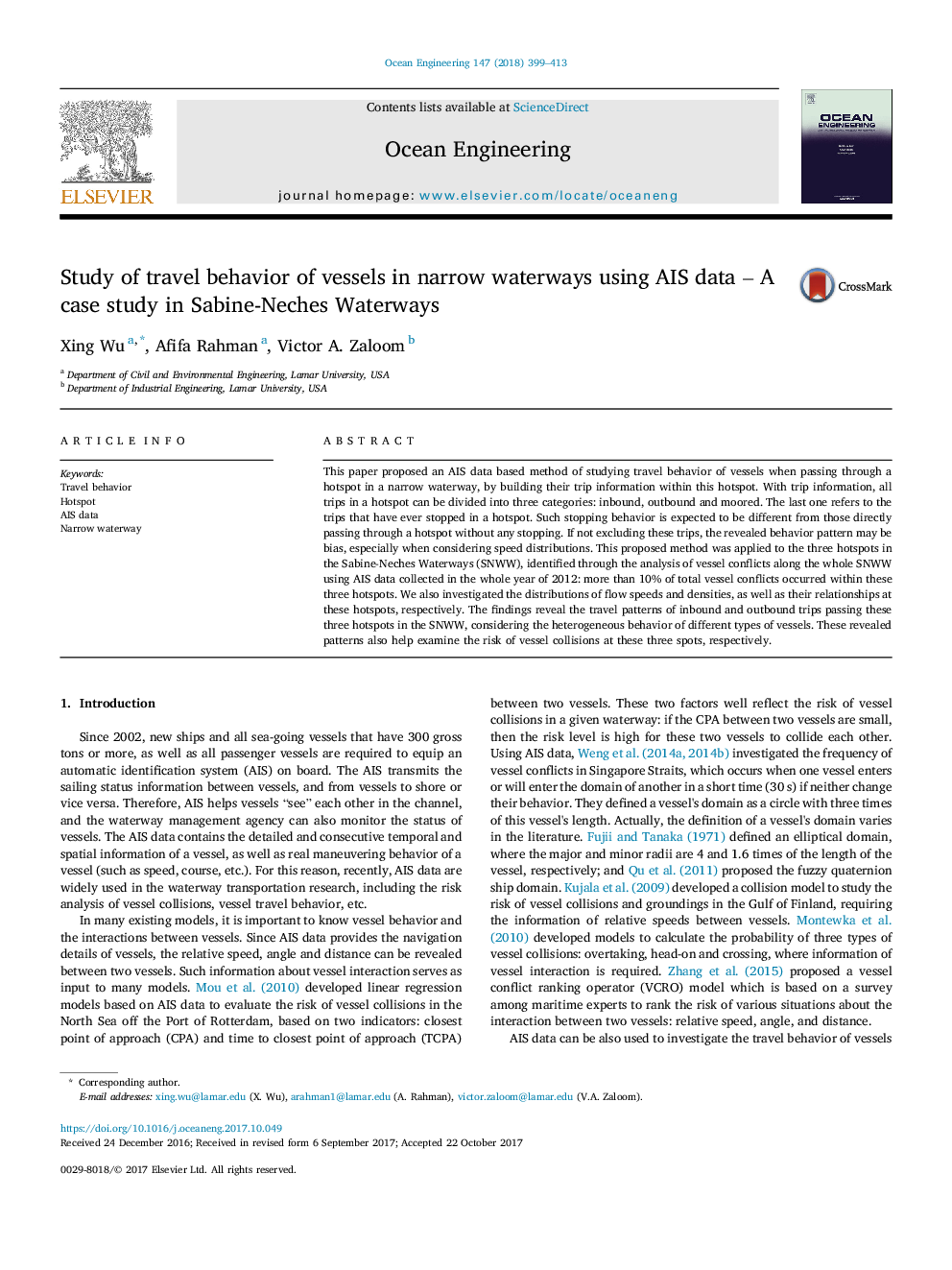| Article ID | Journal | Published Year | Pages | File Type |
|---|---|---|---|---|
| 8063688 | Ocean Engineering | 2018 | 15 Pages |
Abstract
This paper proposed an AIS data based method of studying travel behavior of vessels when passing through a hotspot in a narrow waterway, by building their trip information within this hotspot. With trip information, all trips in a hotspot can be divided into three categories: inbound, outbound and moored. The last one refers to the trips that have ever stopped in a hotspot. Such stopping behavior is expected to be different from those directly passing through a hotspot without any stopping. If not excluding these trips, the revealed behavior pattern may be bias, especially when considering speed distributions. This proposed method was applied to the three hotspots in the Sabine-Neches Waterways (SNWW), identified through the analysis of vessel conflicts along the whole SNWW using AIS data collected in the whole year of 2012: more than 10% of total vessel conflicts occurred within these three hotspots. We also investigated the distributions of flow speeds and densities, as well as their relationships at these hotspots, respectively. The findings reveal the travel patterns of inbound and outbound trips passing these three hotspots in the SNWW, considering the heterogeneous behavior of different types of vessels. These revealed patterns also help examine the risk of vessel collisions at these three spots, respectively.
Keywords
Related Topics
Physical Sciences and Engineering
Engineering
Ocean Engineering
Authors
Xing Wu, Afifa Rahman, Victor A. Zaloom,
